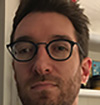3 Ways You Can Become an ‘Augmented Translator’
21 Jan 2020
8 min read

The future of professional translation is here. Are you ready? Translation is driving the globalization of communication, but it encompasses more than just translation: linguistic advising, review, proofreading, transcreation, subtitling, language consultancy, linguistic content management... the list goes on. No doubt 2020 and beyond is set to increase opportunities for translators to add value to their clients. But, given the rapidly changing world we now live in, how can translators evolve their own services, becoming 'Augmented Translators'?
Engage with technology
The purpose of technology in translation has always been to help translators deliver and finalize content faster. The days when translators were locked up in a library with a pile of dictionaries and a pencil to produce a translation are long gone. Today, content is processed online, from brochures and web pages to user manuals and market outlooks. Even traditional white papers are no longer exclusively published in paper format. And the list of tools, plug-ins and technologies available to help translators to finalize and reach audiences continues to grow: translation memories, terminology databases, fragment matches, upLIFT, Neural Machine translation, Autosuggest dictionaries, and more.
Even our corporate language is changing with technology: instead of “engaging” with customers, companies “connect” with customers. Now, for those who are familiar with the technologies offered by our flagship solution, SDL Trados Studio, check out the many assumptions raised about our future by language specialists here.
Even more tech-savvy? Check the other side of the fence and see how content will impact the augmented translators’ environment. Discover SDL Content Assistant, a technology that was considered science-fiction several years ago – but is now very real.
Also, with today’s technology, the help provided to translators does not only come from the tools: now, even content creates itself. Now, it’s up to us, translators, to transform it for our local audience.
Specialize in quality levels, not only in specific industries
Fact: the amount of content to translate has reached incredible levels. While SDL translates hundreds of billions of words every year, this figure remains a drop in an ocean of all translated words. What matters is not the amount to translate. What matters is that the result displayed to your audience meets the quality level expected for such content.
However, billions of words also mean billions of possibilities, and augmented translators are aware of one truth that is the current state of affairs: there is no “standard translation”.
All translations are unique, because clients have unique needs, like their customers. And they also have unique constraints, terminologies, processes, and practices.
With the client’s needs in mind, the augmented translator will adjust their effort and the amount of time required to complete their tasks. And the productivity tools available nowadays are here to help them alleviate the burden: the augmented translator never translates from scratch.
The key factor here is to find the perfect dosage in productivity, the right balance between effort and result. It is important to have a strong understanding of the translation workflow, the tools and assets at your disposal, and your own strengths and skills. This will help assess the quality and thus reduce risks.
In fact, “quality” can only be assessed by a human mind, and this is where the augmented translator and the client can collaborate to set expectations on quality. Because both clients and translators know that a “lack of quality” also means “rework”. And while a “high quality translation” may be expensive, a “low quality translation” may cost even more.
Inject culture, and acquire knowledge
Augmented translators will speed up the process of integrating their clients’ requirements to get the quality needed, and that is a truth for all industries. But only if they have the adequate assets to help them get started in an augmented world.
An augmented translator will take advantage of the following resources:
- Content reuse from translation memories
- Glossaries to apply preferred terminology
- Style guides to comply with formatting, grammar and stylistic rules
- Tone of voice or brand guides to convey the brand’s message
- Project-specific instructions, like character limitations
- Machine and AI-enabled translation engines to accelerate productivity
All these automated tools and assets are literally “knowledge providers” to the translator, and help non-specialized translators to meet client requests even without even knowing the client. These knowledge providers are useful since all the clients have preferred terms, favorite wordings, and different rules.
Of course, this automation can also be error-prone and full of traps: terms in glossaries that do not take the context into account, incorrect source texts written by non-native speakers, corporate jargon not understandable outside of your client’s professional sphere, and more.
This is where the augmented translator has two strong cards to play: culture and understanding.
Augmented translators will be able to spot errors in the source text, avoid using offensive or restrictive content, use the appropriate language for the target audience, rewrite puns, detect dual meanings, adapt to stylistic rules, and correct erroneous terminology used by translation engines, etc.
The augmented translator walks in the footsteps of the ancient copyists and scribes and embraces the same mission and ambition: connect cultures and content to share a message.

